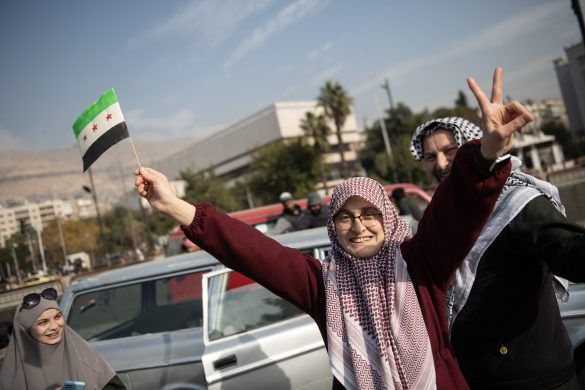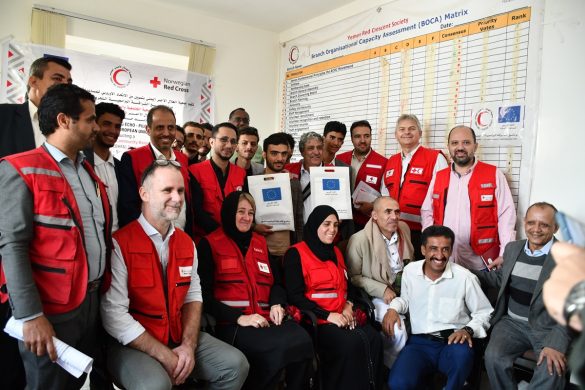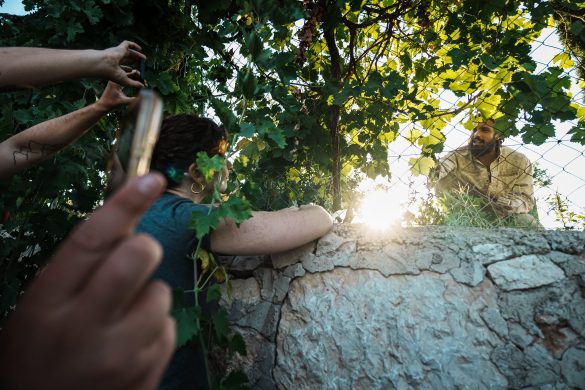Klimakonference i Marrakech, genopretning af vandkraftværk i Tadsjikistan, støtte til håndtering af naturkatastrofer i Sri Lanka og en ny rapport om international klimafinansiering. Oktober bød på en stribe nyheder om klimaprojekter verden over.
International Institute for Sustainable Development (IIED) giver her et overblik over nogle af begivenhederne.
3 november 2014: During October 2014, the Asian Development Bank (ABD), the African Development Bank (AfDB), the European Bank for Reconstruction and Development (EBRD), the International Fund for Agricultural Development (IFAD), the Climate Investment Funds (CIF), the World Bank and the Global Environment Facility (GEF) reported on climate resilience projects in Asia, Africa and Latin America, among others.
ADB, AfDB, EIB, the World Bank, the UN Development Programme (UNDP) and the World Bank released publications, including fact sheets on climate finance. Furthermore, the Inter-American Development Bank (IDB) and the World Bank organized events on national development banks and climate finance, and green bonds.
Bedre håndtering af naturkatastrofer
On projects, ADB reported on a US$40 million emergency assistance grant to Afghanistan for the reconstruction of irrigation and rural road infrastructure in 15 provinces damaged by heavy flooding. ADB also wrote on its support to regional cooperation in Northeast Asia to combat dust and sandstorms, and to China and Mongolia on accessing carbon financing for sustainable management of grasslands and livestock practices. [ABD Press Release on Afghanistan] [ADB Press Release on Mongolia]
AfDB approved loans and grants totalling US$231 million for the ‘Programme to Build Resilience to Food and Nutrition Insecurity in the Sahel,’ which will work with members of the Permanent Inter-State Committee for Drought Control in the Sahel (CILLS) to eliminate the structural causes of acute and chronic food and nutrition crises by providing better access to markets, and prediction of crises and disasters. [AfDB Press Release on Sahel]
On 8 October, during the ‘Fourth Annual Conference on Climate Change and Development in Africa’ in Marrakech, Morocco, AfDB announced that the ‘ClimDev-Africa Special Fund’ (CDSF) is ready to support a number of innovative climate change operations, with initial total funds of US$33 million. The launch was welcomed by Ministers from Benin, Guinea-Bissau and Senegal, present at the event. [AfDB Press Release on CDSF] [AfDB Press Release on Ministers]
Forberedelser på klimaforandringer
EBRD and IFAD signed a Memorandum of Understanding (MoU) to jointly develop the value chain and food security in the agribusiness sector, and promote climate-resilient agriculture by mobilizing financing and advancing global policy dialogues. The institutions will also seek to enhance economic diversification and create more job opportunities in rural areas in developing countries. [EBRD Press Release]
CIF reported on the approval by Cambodia’s Pilot Program for Climate Resilience Sub-Committee of a US$10 million funding for flood-resilient infrastructure development in two Cambodian towns. CIF also reported on how EBRD’s investment in the rehabilitation of a hydropower plant in Tajikistan provides an example of integrating climate resilience into infrastructure investment. The upgrade project design integrates resilience information by modelling future hydrology outcomes under a range of climate change scenarios. [CIF Approval Decision on Cambodia] [CIF Press Release on Tajikistan]
The World Bank approved a US$36 million loan and US$9.5 million donation, by CIF, for the second phase of Bolivia’s ‘Pilot Program for Climate Resilience,’ which aims to improve institutional capacity and comprehensive management of river basins and water resources. Sri Lanka’s Ministry of Disaster Management and the World Bank launched a US$212 million ‘Climate Resilient Program,’ which will take a holistic approach to climate risk, and support the Sri Lankan Government in addressing the physical and fiscal aspects of disaster risk.
The Bank also wrote on: the approach by the Government of Seychelles to disaster resilient development, including a national task force and a damage needs and loss assessment; the Bank’s ‘Resilient Cities Program;’ and a study tour for decision makers and practitioners from Bangladesh, China, the Philippines and Viet Nam to the Netherlands to learn on water resources management and flood control. [World Bank Press Release on Bolivia] [World Bank Press Release on Sri Lanka] [World Bank Story on Seychelles] [World Bank Story on Cities] [World Bank Story on Study Tour]
Klimafinansiering og kulstofskat
On mitigation, the GEF wrote on Chile’s recently-introduced carbon tax on new car purchases and thermal power plants, resulting directly from the ‘Global Fuel Economy Initiative (GFEI) Chile Pilot’ funded by the GEF and implemented by the UN Environment Programme (UNEP). Chile has made a voluntary commitment to reduce 20% its greenhouse gas (GHG) emissions by 2020, compared to 2007 levels. [GEF Press Release]
In October, ADB, AfDB and EIB published fact sheets on climate change in South Asia, and climate finance in Africa, Latin America and Asia. ADB’s ‘Climate Change in South Asia: 12 Things to Know’ collects the Bank’s related key messages and relevant publications on one webpage. ‘AfDB and Climate Finance in Africa’ provides information on the Bank’s activities in the region. EIB’s factsheets on Latin America and Asia explain that climate change mitigation and adaptation are among the Bank’s priority areas in the two regions. [ADB Publication on South Asia] [AfDB Factsheet] [EIB Factsheet on Latin America] [EIB Factsheet on Asia]
Nye publikationer og seminarer
UNDP published ‘A Snapshot on Climate Finance’ infographic, which estimates total global climate finance investments in 2012 at US$359 billion, with public finances contributing a little over one-third. The World Bank collected all its climate change infographics on one webpage. The Bank also: launched the October issue of its ‘Carbon Finance at the World Bank’ newsletter; reported on an online tool by the International Finance Corporation (IFC) for modeling the efficiency of buildings using various options and materials; and announted the winners of ‘Action4Climate’ documentary competition for young filmmakers. [UNDP Infographic] [World Bank Infographics] [World Bank Carbon Finance Newsletter, October 2014] [World Bank Story on Buildings Tool] [World Bank Press Release on Filmmakers]
On events, IDB organized a seminar on ‘National Development Banks and Climate Finance: Innovating in Scaling Up Private Investments’ from 6-7 October 2014, in Washington D.C., US, which sought to raise awareness of the catalytic role of national development banks in climate finance, and climate funds’ requirements, objectives and challenges. The World Bank and Japan Securities Dealers Association hosted a seminar on green bonds on 28 October, in Tokyo, Japan, which explored the Bank’s achievements and challenges in the field to date. [IDB Event Webpage] [World Bank Event Webpage]
A brief by the World Bank highlights the role of the Bank and the IFC in pioneering in and raising awareness of the green bond market, noting that, since 2008, the two institutions have together issued more than US$10.7 billion in green bonds. The brief quotes World Bank Group Vice President Rachel Kyte who explains that green bonds will be essential for combating climate change, and provide an opportunity to those looking to divest and diversify away from fossil fuel-intensive portfolios. According to the brief, over US$32 billion in green bonds were issued globally between January and October 2014. [World Bank Brief on Green Bonds]
Læs mere IIEDs hjemmeside














